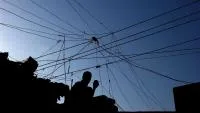
Delhi pioneers distribution reform
Last month we examined what ails the distribution segment of the electricity business in India and the challenges facing the Distribution Companies (Discoms, in common parlance). Over the past two decades India has been struggling to reform the distribution sector managed by more than a hundred utilities in 35 States and Territories. Electricity is a concurrent subject in India which means although there are federal laws, States are empowered to enact their own amendments to the basic laws. Thus several States passed their own legislation and tried out different models for privatising and restructuring. Some models yielded less than desired results and some others were spectacular failures driving the sector into even deeper crisis.
At the dawn of the new century the State of Delhi was faced with the worst possible scenario. The Government owned vertically integrated Delhi Vidyut Board (DVB), could manage to deliver electricity for not more than 20 hrs in a day.
Aggregated Technical & Commercial Losses (AT&C) which is a product of T&D Losses and Collection Efficiency, stood at an awesome 53 percent implying that the Utility could recover from its customers payments for only 47 percent of the electricity it pumped into the T&D system. There was no money for maintenance and capital expenditure. Workplace accidents were frequent. Abysmal service levels bred corruption. Beyond a point, customers rebelled and the Government was forced to take the hard decision of privatizing the distribution sector.
A brave decision on the face of stiff resistance from the worker’s unions, instances of failed attempts at privatization and absence of a viable reform model elsewhere within the country.
Fortunately the legislative framework was also changing. The ancient Indian Electricity Act 1910 (framed by the British during the colonial era) was replaced by the Electricity Act 2003 - a modern legislation which comprehensively embraced generation, transmission, distribution, trading & use of electricity.
The new law protected consumer interests, mandated phasing out of cross subisidsed tariff, gave guidelines for developing performance standards, allowed competition and provided a structured grievance redressal mechanism. The Electricity Regulatory Act 1998 was implemented which enabled appointment of state and central regulators. The State of Delhi simultaneously passed a couple of enabling legislations to set the stage for reforms.
With removal of legislative hurdles the next step was designing an effective business model for privatisation. DVB’s books showed US $1.5 Billion as outstanding dues from customers. The customers on their part were not paying, claiming that bills were inflated due to defective calculations or wrong meters. About 20,000 billing related cases were pending at various courts. Financial books were in disarray as accounts had not been closed and audited for 8 years. In that scenario the key challenges were:
a) Most of the dues were being contested in courts and there was no fixed asset register hence how can the enterprise be valued for sale if assets and liabilities were not accurately known?
b) The revenue generated by the enterprise was inadequate to even pay for the electricity required to meet full customer demand. Whoever bought the enterprise would have to pump in US $175 Million every year till efficiency improvements boosted revenues to a level that would meet all expenditures. Why would any investor be interested with such long term undefined risk?
c) How to protect the interests of 20,000 unionised workers and executives?
d) How to ensure long term commitment of the new investors and more importantly, prevent asset stripping?
e) How can undefined but certainly huge investments be attracted to replace, refurbish and augment the T&D infrastructure?
It emerged that a viable privatisation model can be worked out only if the Government was bold enough to assume all past and present financial risks and simultaneously insulate the new investors from financial risks for a fixed time going into the future. The new investors, on their part, would have to commit to improve efficiencies and bring in new investments required to do that. At the end of the risk free period the investors would have hopefully turned around the distribution sector into a self sustaining profitable business.
Eventually, the first 5 years of privatisation was designated as the risk free control period. The state was carved up into three geographically contiguous areas for three different Discoms. Assets were hypothetically valued working backwards from projected revenue potential. The Government decided to retain 49 percent stake to remain closely associated and yet allow 51 percent stake and management control to the new investor. The Government also committed US $900 Million as transition support to be used over the control period for funding the gap between ability of the new Discoms to pay for the electricity they require and the actual cost of that electricity. From the sixth year onwards the Discoms would be on their own.
The 51 percent stakes were sold to bidders committing the highest reduction of AT&C losses and best improvement of service over the control period.
Two of the largest and most reputed business houses in India won the bids to take over the newly formed Discoms in 2002, amongst all pervasive skepticism that this experiment too will fail. As expected the transition was painful for both the new owners and the Government. But at the end of the control period i.e. by 2007 all three Discoms were on target.
The best performance was from North Delhi Power (a TATA Group enterprise) which brought down AT&C losses from 53 percent to 21 percent, eliminated the need for further financial support from the Government, invested US $400 Million to improve and augment infrastructure, improved SAIDI and SAIFI by an incredible factor of 20, started setting benchmark in customer service and all of this with a minuscule 18 percent total tariff increase over the five year control period against projected increase of 43 percent.
The company also earned full profits as allowed in law thus enabling both the Government and the private investor to recoup their entire initial investment.
Finally a viable reform model was available to replicate across the country.
In our next and concluding article we will compare India’s electricity reform with what’s happening in China which is the other exciting economy in the continent.



















 Advertise
Advertise






